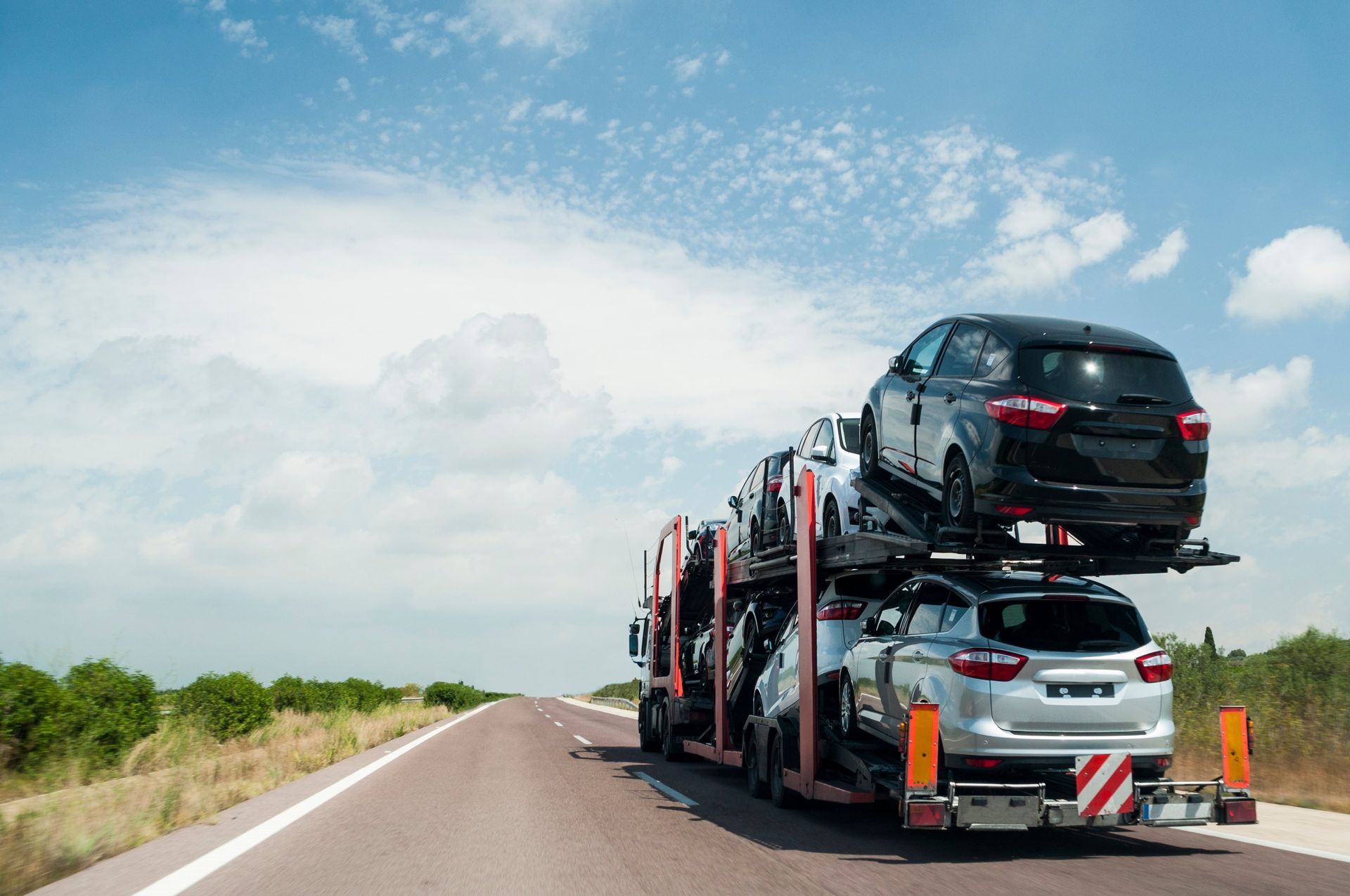Long-Distance Auto Transport: A Complete Guide
For many people, long-distance auto transport can be a daunting task. For example, consider the case of John and Mary who recently relocated to California from Massachusetts for their jobs. In order to get their car across country in one piece, they had to look into long-distance auto transport services - something neither of them had ever done before. Fortunately, with this complete guide on the ins and outs of long-distance auto transport, you too will have everything you need to make your move as smooth as possible.
No matter how far away you're moving or what type of vehicle you’re transporting, understanding the basics of long-distance auto transportation is imperative if you want your car transported safely and securely. After all, it's not just about getting your automobile from point A to point B – it’s also about making sure that it arrives in perfect condition! This comprehensive guide will cover everything from choosing the right carrier company to packing up your car for its trip across country.
Furthermore, by staying informed throughout the process, you'll be able to avoid potential pitfalls like hidden fees or unreliable carriers. With all these tips in hand, plus an abundance of helpful resources at your fingertips, rest assured that even novice movers can feel confident when entrusting their beloved vehicles with a professional transporter. So read on and learn more about what goes into successful long-distance auto transport so you can plan accordingly!

Overview Of Auto Transport
They say the longest journey starts with a single step, and that's certainly true when it comes to long-distance auto transport. Whether you're relocating or just need to get your car from A to B, there are many questions you may have before beginning the process. Before taking this journey, take some time to read up on what's involved in planning for long-distance auto transport.
The first item on our list is an overview of the basics of transporting a vehicle over a distance too far to drive. You'll want to familiarize yourself with the different types of services available, such as open trailer vs enclosed trailer transport. Additionally, learn about how insurance works for protection during transit and any additional costs that may arise due to special requirements like door-to-door delivery or expedited shipping. Knowing these details will make sure you choose the right service for your needs.
Once you know what type of service meets your needs best, be sure to research companies offering those services so you can compare rates and reviews. Don't forget that customer service is important too; ask potential carriers if they offer 24/7 support throughout the entire duration of your shipment - something essential if anything goes wrong during transit! With all this information at hand, you should now feel more confident in choosing a provider who can give you the peace of mind that your car will arrive safely and soundly at its destination without breaking the bank.
Types Of Auto Transport
Auto transportation is the ultimate convenience for long-distance travel. No more worrying about hours of tedious driving, and no more costly airline tickets or expensive rideshares. But what are your options when it comes to transporting your vehicle? That's where this guide comes in – we'll break down all the different types of auto transport available so you can make an informed decision.
Let's start with open air shipping: the most popular option by far. This involves placing your car on a flatbed truck that is then driven to its destination. Your car will be exposed to wind, road debris, and weather during transit – but don't worry, it should arrive at its destination safe and sound! Open air transportation tends to be cheaper than other methods because carriers usually take multiple cars at once. You may even get lucky and find a carrier willing to provide door-to-door service at no extra cost!
There’s enclosed shipping. As the name implies, your car will be placed inside an enclosed trailer before being transported across the country. Enclosed trailers offer much greater protection from outside elements like weather and road debris, plus they're more secure against theft or vandalism. While this method is generally more expensive than open air transport due to fewer vehicles per shipment, it also offers peace of mind knowing that your car won't be damaged along its journey.
Costs Of Long-Distance Auto Transport
The costs of long-distance auto transport may seem daunting, but with a little bit of research and planning they can be managed. It's like taking on the open road - you don't know what lies ahead, but you're ready to take it on.
In order to successfully navigate this journey, one must consider all associated costs before committing to any kind of automobile transportation service. Factors such as distance travelled, type of vehicle being shipped and any additional services required will have an effect on your overall budget. While there are some fixed fees related to certain types of transportation methods or services, other costs may vary depending on your specific needs.
For instance, if you choose door-to-door delivery for your car, then expect added charges for fuel surcharges and tolls along the route. Similarly, if opting for enclosed shipping versus open trailer transport, that option usually comes at a higher premium price tag due to its enhanced level of protection from outside elements while in transit. Taking these points into consideration when researching auto transporters is critical in ensuring that everything goes smoothly without incurring unexpected expenses down the line.
Benefits Of Long-Distance Auto Transport
The benefits of long-distance auto transport are plentiful. The primary benefit is saving yourself time and effort. Driving across the country would take days, if not weeks depending on your starting point and final destination. By opting to have your vehicle transported instead, you can save valuable hours in the car and free up that time for other activities or obligations.
Another great advantage to having your vehicle transported is that it eliminates wear-and-tear from driving a long distance. Most people don’t consider how much stress their car goes through when taking a trip like this, but transporting it means avoiding all those miles and keeping its condition pristine.
Long Distance Moving Companies will often offer insurance coverage for your vehicle during transit. This gives peace of mind knowing that if something were to happen along the way, you would be compensated for any damages incurred - giving an extra layer of protection compared to handling the move yourself.
Choosing The Right Auto Transport Company
Picture this: your car is loaded up onto a long-distance auto transport, ready to be taken on the journey of its lifetime. The thought of it alone can bring immense relief and excitement – the perfect solution for getting your vehicle from place to place with minimal effort or stress. But before you get there, you must first choose the right auto transport company.
The selection process begins by doing thorough research into potential companies. You should look at reviews online, ask friends and family who have used such services in the past, and compare service options and prices between different companies. It's important to make sure that all costs are transparent and included in any quotes offered so that there are no hidden fees down the track. Additionally, choosing an insured transporter will give you peace of mind knowing that your vehicle will be covered if anything were to happen during transit.
Once you've done your research, carefully consider which company best fits your needs – one with experience handling specific types of vehicles as well as a good reputation for customer service may be worth considering over others. Ask questions about their pickup/delivery times, any additional charges or services they offer (e.g., door-to-door delivery), or what type of tracking system they use; these things might influence your decision too! By taking care when selecting an auto transport carrier, you can ensure that everything goes smoothly without any unpleasant surprises along the way.
Preparing Your Vehicle For Long-Distance Auto Transport
It's estimated that over 10 million vehicles are transported in the United States each year. Preparing your vehicle for long-distance auto transport is a crucial step in ensuring it remains secure and safe during transit. In this guide, we'll cover what you need to do before handing your car off to the chosen transport company.
When preparing your vehicle for transport, start with giving it a thorough clean inside and out. Remove all personal items from the interior including any loose items on the exterior, like bike racks or spoilers, as these can be damaged en route. Additionally, make sure to check tire pressure and fill up with gas if necessary – most companies ask that cars have no more than ¼ tank of fuel when they pick them up.
For added security while transporting your vehicle across state lines, you should consider getting an insurance policy from either your current insurer or one provided by the carrier themselves. This will provide peace of mind knowing that any potential damage done during transit will be taken care of so there won't be any unexpected costs down the line. Additionally, take photographs of both the front and back of your vehicle prior to pickup; this way you’ll have evidence if anything does happen during shipping which could prove valuable later on if filing an insurance claim becomes necessary.
With these steps completed and double checked, you can rest assured that everything has been taken care of for a smooth journey ahead!
Documenting Your Vehicle's Condition Prior To Transport
When transporting a vehicle over long distances, it’s important to document the condition of your car prior to transport. This can help in case any damage is incurred during transit. Fortunately, this process is simple and straightforward; all you have to do is take pictures or videos of every angle of the car, inside and out.
In addition to photos and videos, you should also make sure that there are no personal items left behind in the vehicle before transport. While the chances of theft are low, it's still best practice to remove anything valuable from the interior - such as electronics or jewelry – just in case something unexpected happens on its journey. Furthermore, if possible, leave a note with contact information somewhere within the car so that you can be reached during transportation if needed.
Documenting your vehicle will provide assurance that it arrived at its destination exactly how it was when initially loaded onto the trailer. After taking these steps, all that’s left for you to do is sit back and wait for your car’s arrival.
Insurance And Liability Considerations For Auto Transport
Transporting your car across a long distance can be both exciting and nerve-wracking. It's like taking the plunge off a high dive - you want to make sure everything is in place before you take the jump! That being said, when it comes to auto transport, one of the most important items on the checklist is insurance and liability considerations. Let’s explore this further.
When shipping your vehicle, you should always purchase an insurance policy that covers any potential damage during transit. Most transport companies will offer some sort of coverage for their services; however, it's best to get additional protection if something were to go wrong along the way. This could include theft or vandalism as well as physical damages caused by collisions or accidents while traveling. Additionally, some policies may even cover mechanical issues that arise due to improper loading techniques used by carriers.
It's also essential to read through all of the terms and conditions provided by each company prior to signing any agreements. Make sure you understand what types of claims are covered under their policies so that you're not left with unexpected costs down the road. Remember that although many companies provide insurance options, they don't necessarily accept responsibility for any losses incurred during transportation – so understanding your rights and obligations ahead of time is key!
Tracking Your Vehicle During Transport
When it comes to auto transport, knowing the whereabouts of your vehicle is of utmost importance. Tracking your vehicle during transit ensures that you have a clear idea of where it is throughout its journey and can provide peace of mind. In this guide we will discuss how tracking works and the benefits associated with it.
Tracking your vehicle during transport involves using GPS technology to monitor its location in real-time from origin to destination. This information is then relayed back to you or your transporter via an online portal, allowing for a more streamlined experience when shipping long distance. Not only does this allow for greater visibility into the movement of your car, but also allows for faster resolution if there are any delays along the way.
Tracking has the potential to save time and money by providing better insight into estimated delivery times and expected arrival dates. Having access to accurate data about traffic patterns, road conditions, and other factors related to auto transport helps both shippers and carriers plan accordingly – making sure that vehicles arrive on time without unexpected delays or damages due to weather or other unforeseen circumstances. Tracking provides many advantages when shipping cars over long distances — giving people peace of mind while saving them time and money at the same time. It's no wonder why so many choose to use tracking services when transporting their vehicles!
Tips For Smooth Delivery Of Your Vehicle
Are you anxious about the transportation of your vehicle? You’re not alone! Long-distance auto transport is a complex process, and it can be difficult to know what to expect. Fortunately, there are some tips that can ensure smooth delivery of your car. What could these helpful hints be? Let's take a look at the tenth section of our guide: Tips for Smooth Delivery of Your Vehicle.
Make sure you have all the documents ready before delivery day. This includes titles, keys, registration papers, insurance certificates - everything related to your vehicle should be in order before pickup or drop off time arrives. Additionally, cleaning out any personal items from within the car will save time and hassle on both ends. It also helps if you provide full details about your destination address so that the driver knows exactly where to go when delivering your car!
Do some research into which auto transport company would best suit your needs – this means looking into things like price estimates and customer reviews. Furthermore, don't forget to ask questions during the booking process itself; after all, knowledge is power! Knowing how long it takes for pick up and how much communication they offer with their customers along the way can help alleviate any potential stressors associated with shipping your vehicle over a long distance.
So there you have it – following these steps will set you up for success as far as achieving a safe and timely auto transport experience goes!
Long-distance Auto Transporting
Long-distance auto transport can be a great way to get your vehicle from one place to another without having to drive it yourself. It’s important to make sure you choose the right company, understand costs and insurance requirements, and document your car's condition prior to transport. Doing so will help ensure that your vehicle arrives safe and sound at its destination. To get the most out of an auto transport experience, think of it as taking a trip with a trusted friend: make sure all details are ironed out before hitting the road, take extra precautions for safety along the way, and plan ahead for any unexpected hiccups. With these steps in mind, long-distance auto transport can be a smooth journey leading you safely home again.











